
Our review of the latest in glass manufacturing technology.
Built strong
biesse.com
The Busetti F Series double edger, designed and built with years of experience, offers a more robust chassis. The solid frame construction of the machine helps absorb vibration and promotes longer spindle life. The F Series also features a unique alignment system using two drive belts to transport the glass through the grinding and polishing process with great precision to ensure the highest quality edge polish. Additionally, the unique design of the working area and electro-spindle (along with a special drop-down deck) prevents water penetration into the drive mechanism, ensuring the long life of these components. The high level of automation and the PC-based control represent a functional and easy-to-use solution for companies that need to reach higher levels of productivity.
Automatic retraction
landinst.com
Non-contact temperature measurement specialist Ametek Land, working in partnership with furnace-monitoring-system manufacturer SVA Industrie Fernseh, has developed a new housing and pneumatic auto-retraction system for Ametek Land’s NIR-B (Near Infrared Borescope) Glass thermal imaging solution for glass furnace applications. This development means that Ametek Land’s award-winning NIR-B Glass thermal imager is further protected against damage from overheating within a glass production environment, especially in cases of air purge, water cooling or power failure. The pneumatic auto-retract system consists of an innovative and rapid-response retraction mechanism that instantaneously retracts the instrument from the furnace wall in the event of a failure. The system will retract from a number of failures such as air purge, water cooling, mains power and, if there is an over-temperature condition detected, at the borescope tip. The system is fully pneumatic and has no exposed electrical components operating within the extremely high-temperature environment of the glass melt tank. The system’s IP66- rated control box can be positioned up to 20 metres away and houses an uninterruptable power supply that automatically retracts the NIR-B Glass in the event of a power failure. Within the harsh process environment of the glass furnace, an integrated air purge ensures that the thermal imager maintains a clean lens at all times. With a high-performance water-cooling system built in as standard, the overall system has a low air flow requirement, even in the highest temperature furnaces. NIR-B Glass, which was launched in 2016, enables glass producers to receive continuous real-time temperature data, combined with a crystal-clear thermal video image. This means operators can clearly “see” cold spots from air leaks coming through structural refractory, so that cracks or collapses are easily detected. This, combined with the ability to visualize flames, allows the plant to optimize the flame pattern and burn efficiency. The ability to overlay thermal profiles across the crown and along the melt allows for accurate batch line control, production throughput optimization and batch transit time recording. Designed specifically for the glass-melt furnace working environment, the NIR-B Glass is designed to withstand the high ambient temperatures. With over 324,000 temperature measurement points in the field of view, the NIR-B Glass also can monitor the drift in crown roof thermocouples. Advanced software features allow multiple visual or output alarm controls to be set as specified by the plant. Critical areas, like port arches, can be continuously monitored for overheating, with automated alarms set for over-temperature conditions. This can be vital in extending the lifespan of the melt tank refractory and in providing greater asset protection through more accurate, remote infrared temperature measurement and live thermal imaging.
Big glass processing
bystronic-glass.com
Bystronic has introduced system solutions for insulating glass with Thermo Plastic Spacer from its original inventor. The B’Vario TPS and B’Jumbo TPS from Bystronic glass are individual insulating glass manufacturing production solutions, providing unique versatility. They only differ in the available working heights. The B’Vario TPS is available at a minimum height of 1.6 meters while the B’Jumbo TPS is a large dimensioned line of up to 3.3 meters. Both can be additionally equipped with the finisher feature for the esthetic smoothing of the TPS bevel joint.
Bystronic glass is the inventor of the TPS IG manufacturing process with several million installed TPS IG units worldwide. The production is greatly simplified thanks to the direct application onto the glass by a machine called TPS’applicator. The width of the spacer can be changed as desired during operation without any time loss. This way of production eliminates the need to stock different spacer profiles and connectors. The finisher is an optional machine that can make the patented bevel joint of TPS invisible. With the standard, proven solution, the gas-tight bevel joint does not require any thermal-mechanical reworking. With the optional use of the finisher, the customer can additionally smooth the bevel joint leading to an upgraded aesthetical result. The overall result is customers now have the possibility to make the patented TPS bevel joint nearly invisible. The size, shape and thickness of TPS remain unchanged and processing of shaped formats is possible.
Bowed glass no problem
forelspa.com
Forel’s jumbo glass line promises exceptional performance and features in terms of weight , thicknesses and non-planarity of the processed glass sheets, aligned or stepped. The Forel line can process some of the largest sizes of IG glass requested by today’s market. The line is able to adapt itself to glass sheets that are not perfectly flat – by as much as centimetres – with a focus on size, accuracy and the types of processes carried out. The line consists of a loading area, coating removal, a washing machine, inspection and frame mounting, a 180-degree glass-turning section, an assembling press with gas filling (argon and krypton) and an automatic sealer. The line will process single glass sheets up to 40 millimetres thick and insulating glass up to 100 millimetres thick. This requires a load capacity for finished products of up to 550 kilograms per linear metre. Structural stepped units with a vertical offset up to 250 millimetres and leading horizontal offset up to 1,000 millimetres are possible. The line can process bowed glass up to 2.5 millimetres per linear metre (15 millimetres over a six-metre glass length). The sealing module has the flexibility to use three different materials at a high continuous material flow rate of four litres per minute. The stepped unit assembler can put the smaller glass in the front and a dedicated glass unloading section is included.
Lower cycle times
lisec.com
LiSec set itself the target of developing the most efficient cutting table for flat glass. The result is a brand-new high-performance machine in the new LiSec design with the name SprintCut cuts flat glass automatically and quickly thanks to the state-of-the-art motive power engineering. With linear motive power engineering and the integrated measuring system, the new SprintCut ensures maximum cutting speed and outstanding dynamics. The maximum acceleration is approximately 16 metres per second per second and the maximum speed is 310 metres per minute. The linear drive has few moving parts, which means the mechanical wear is lower resulting in longer maintenance intervals and low downtime costs. Beside the especially high acceleration, this motive power engineering allows an excellent positioning accuracy of the cutting head with a maximum offset of 0.1 millimetres. Due to the intelligent control, the maximum speed is reached as quickly as possible. Through careful constructive improvements, LiSec has been able to significantly reduce the noise emissions and optimize the handling of the entire machine to benefit for the operator and machine operating company. The operation of the cutting table is made easier by a higher degree of automation and new electronic controls. The cutting pressure control, grinding pressure control, monitoring of the consumption of cutting oil and cutting wheel wear are all automated, and as a preventive measure the control system indicates pending replacements or fillings, reducing unplanned downtimes. LiSec estimates customers with highly automated production lines in multiple-shift operations can benefit from up to 20 per cent shorter cycle times.
Complete solutions for glass production
cmsna.com
CMS North America brings more than 30 years’ experience and innovation to the glass machining market. It offers complete solutions for high-speed glass production with a full line of state-of-the-art CNC glass processing machines and a staff of highly skilled professionals who help deliver superior CNC systems consultation, installation and service. CMS emphasizes a no-limitations approach to each project and works to develop the ideal solution for each machining challenge.
Print this page
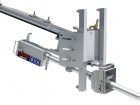
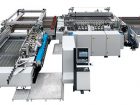
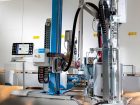
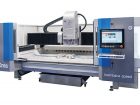
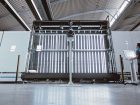
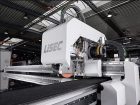
Leave a Reply